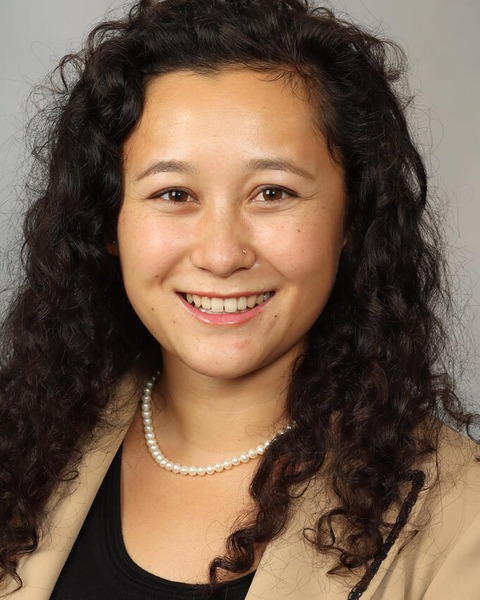Stereotactic and Functional
Laser interstitial thermal therapy in medically refractory epilepsy due to focal cortical dysplasia
Laser Interstitial Thermal Therapy in Medically Refractory Epilepsy Due to Focal Cortical Dysplasia

Alexa Panrudkevich, BS
Medical Student
Mayo Clinic
Rochester, MN, US
Presenting Author(s)
Introduction: Focal cortical dysplasia (FCD) is a common surgically remediable pathology found in medically refractory epilepsy. Removal of the epileptogenic FCD has been done by open resection or in recent decade by MRI-guided laser interstitial thermal therapy (LITT), a minimally invasive stereotactic technique. This study evaluated the seizure outcomes after LITT in patients with medically refractory epilepsy secondary to FCD.
Methods: This is a single-institution retrospective review of LITT between 2017 and 2023 for medically refractory epilepsy due to FCD. Patient demographics, presurgical epilepsy history, neuroimaging, scalp EEG, stereoEEG (sEEG), and surgical outcomes were reviewed. Seizure outcome was classified according to Engel Epilepsy Surgical Outcome Scale. Descriptive statistics included medians and ranges for non-normal dataset. Comparisons between patients were made using Fisher’s Exact test for dichotomous variables.
Results: Fourteen patients (six female) underwent LITT for medically refractory epilepsy secondary to FCD. Median age of seizure onset was 9 years (range 10 months – 18 years). Median age at surgery was 18 years (range 9-47). FCD was extratemporal in 12 patients (85%) and left hemispheric in 5 patients (35%). sEEG was performed prior to LITT in 10 patients. With median duration of last follow-up 19 months (range 1 - 68 months), 9 patients (64%) were seizure-free. Seizure freedom at last follow up was similar regardless of FCD localization/lateralization or use of sEEG (extratemporal 8 patients vs temporal 1 patient, p=1.0; left 3 patients vs right 6 patients, p=1.0; with sEEG 6 patients vs without sEEG 3 patients, p=1.0). Three patients underwent radiofrequency ablation during sEEG, in whom 2 patients achieved sustained seizure freedom between 3 months and at last follow-up.
Conclusion : Medically refractory epilepsy due to FCD can be treated effectively by LITT. About two thirds of patients may achieve seizure freedom. Extratemporal localization and left lateralization do not appear to affect seizure outcome.
Methods: This is a single-institution retrospective review of LITT between 2017 and 2023 for medically refractory epilepsy due to FCD. Patient demographics, presurgical epilepsy history, neuroimaging, scalp EEG, stereoEEG (sEEG), and surgical outcomes were reviewed. Seizure outcome was classified according to Engel Epilepsy Surgical Outcome Scale. Descriptive statistics included medians and ranges for non-normal dataset. Comparisons between patients were made using Fisher’s Exact test for dichotomous variables.
Results: Fourteen patients (six female) underwent LITT for medically refractory epilepsy secondary to FCD. Median age of seizure onset was 9 years (range 10 months – 18 years). Median age at surgery was 18 years (range 9-47). FCD was extratemporal in 12 patients (85%) and left hemispheric in 5 patients (35%). sEEG was performed prior to LITT in 10 patients. With median duration of last follow-up 19 months (range 1 - 68 months), 9 patients (64%) were seizure-free. Seizure freedom at last follow up was similar regardless of FCD localization/lateralization or use of sEEG (extratemporal 8 patients vs temporal 1 patient, p=1.0; left 3 patients vs right 6 patients, p=1.0; with sEEG 6 patients vs without sEEG 3 patients, p=1.0). Three patients underwent radiofrequency ablation during sEEG, in whom 2 patients achieved sustained seizure freedom between 3 months and at last follow-up.
Conclusion : Medically refractory epilepsy due to FCD can be treated effectively by LITT. About two thirds of patients may achieve seizure freedom. Extratemporal localization and left lateralization do not appear to affect seizure outcome.

.jpg)